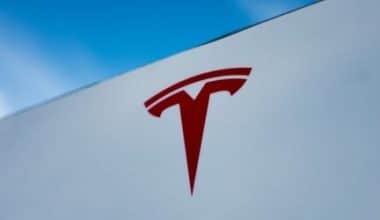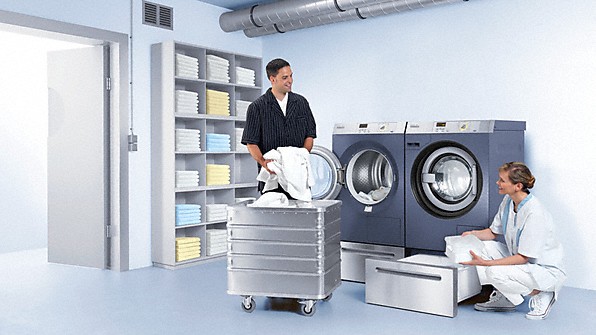Leasing a car is a method of renting a brand-new vehicle for an extended period, typically 2-4 years. You’ll pay a one-time fee, followed by fixed monthly payments, before returning it to the finance company at the end. You will never own the vehicle. The leasing company will ask you how many miles you want to drive each year, and you’ll have the option to pay extra for a maintenance package that covers routine maintenance on wear and tear issues. That’s a quick overview of the concept, but how does car leasing work? Use our guide to learn more about how leasing a car works.
What Is a Car Lease?
When you buy a car, you become the owner of it. If you finance the purchase, you will own the vehicle once you have paid off your car loan in full. If you pay cash, you will own the car outright at the time of purchase.
Leasing a vehicle is not the same. Instead of owning the car, you pay a dealership for the right to use it for a set period, usually two to four years. You’ll make monthly payments, just like you would if you were repaying a car loan. However, you do not own anything at the end of the lease payment period.
How Does Leasing A Car Work
A vehicle lease is a contract between you and the car dealership from which you are leasing. When you sign a vehicle lease, you are agreeing to the dealership’s terms. These conditions can include things like:
- The lease’s duration
- Number of miles you’re allowed to drive per year
- The total number of miles you are permitted to accumulate during the lease term.
- Penalties for exceeding mileage allowances
- Maintenance obligations and responsibilities
- Lease payments and how they are calculated every month
- What happens if you fail to make a lease payment?
- Lease early termination procedures
Your lease may also specify what options you have when the lease term expires. This could include renewing a lease on the same vehicle, exercising a purchase option to purchase the vehicle at a predetermined price, or signing a new lease on a different vehicle.
Pros and Cons
Pros of Leasing a Vehicle
If you don’t want to buy a car outright, leasing one might be a good option. The following are some of the advantages of leasing:
- Possessing the ability to drive a new or newer vehicle every few years.
- Lower monthly payments when compared to financing a vehicle purchase
- A lower down payment is required to qualify for a lease versus a car loan.
- The ability to buy the vehicle at the end of the lease term
Because you are not locked into the vehicle for the long term, signing a lease allows for flexibility. When your lease expires, you can either switch to a different vehicle or purchase a car if you’re ready. Assuming you adhere to the lease terms, it can also be less expensive than purchasing a car, at least for the duration of the lease term.
Cons of Leasing a Vehicle
Some factors can make leasing less appealing than buying a car. Here are a few examples:
- You will be limited to a certain number of miles per year, such as 10,000 or 15,000 per year.
- Penalties for exceeding mileage restrictions can be severe.
- Excessive wear and tear may also result in a penalty.
- Getting out of a lease early if necessary can be costly.
Another disadvantage for some people is that they are not allowed to customize the vehicle, which is something you can only do if you buy one instead.
What is the Minimum Credit Score Required to Lease a Car?
If you have good credit, leasing may be easier and less expensive than taking out a car loan. If you have bad credit, the vehicles you can lease may be limited.
In general, car leasing companies prefer customers who work with or have a FICO® Score of at least 700. Higher scores may also qualify you for a lower monthly payment. This is because your credit can affect your money factor, which is the financing charge portion of your monthly payment.
Some dealers provide leases on used vehicles, which may be easier to obtain if you have bad credit. However, the lease may have high fees and may lack many of the benefits of leasing a new car. You might be better off working on improving your credit and finances before looking for a lease. Consider buying a used car that is a better fit for your budget.
How Does the Car Leasing Process Work?
Aside from selecting a vehicle, there is a little additional work to do when leasing a car. From enquiring about your ideal motor to having it delivered to your door, and then what to do at the end, here are the six steps you need to know.
#1. Determine where you will get the car.
With increased competition in the car leasing market, it is no longer just individual online providers who provide the service. Many major automakers, including Ford, Honda, and Volvo, now offer lease deals for their vehicles. This is accomplished through three types of dealerships: franchised, independent, and supermarkets. A franchised dealership will sell both new and used vehicles, whereas an independent dealer or car supermarket will only sell used vehicles. Choosing between a dealership and a provider is critical for ensuring that a contract works in your favor.
#2. Select a vehicle
Once you’ve determined where to get a lease car, you must decide what kind of vehicle you require or desire. If you’re going through a dealership, you probably already have a good idea of what you’re looking for.
The benefit of leasing is that it is available for all major manufacturers and accompanying vehicles. There is something for every type of driver, whether you want a hatchback, a family-friendly SUV, a luxury saloon, a sports car, or an off-roader.
#3. Create your deal
The way car leasing work requires you to make stipulations in the contract, specifically how long you want the vehicle for, how many miles you’ll drive each year, and how much you want to pay as an initial rental.
Finance providers will typically offer you a 24-, 36-, or 48-month contract, though some companies offer shorter and longer agreements. Your monthly lease payments cover the depreciation of your chosen vehicle over the term of your agreement, so the shorter the time you have a car, the higher the rent.
#4. Determine whether you require a maintenance package.
Because a finance provider is the registered owner and keeper of any car you lease, it is your responsibility to keep it in good condition throughout your contract.
The BVRLA has a ‘Fair Wear and Tear’ standard that all leasing companies follow when assessing any damage to their vehicles, which is especially important when returning your car. But don’t worry, you won’t be charged for normal wear and tear from normal use.
Most lease agreements will include a maintenance package as an option. It can be added at the time of configuration or at any time in the future by the provider and will cover routine maintenance and repairs for issues. As long as they were not caused by driver error or an accident, in which case you must pay to have them repaired at an approved garage.
#5. Obtain insurance
Unless they are advertised as ‘complete care,’ most vehicle leasing agreements do not include insurance as part of the monthly rental price.
As a result, you must insure the car as you would a purchased vehicle. The only difference is that a finance provider will always require you to obtain a fully comprehensive policy that protects you and your vehicle as well as other drivers and their vehicles. Protection for any passengers and property is also included, providing you and the finance company leasing the car with complete peace of mind.
If a car you’ve leased is written off, optional GAP (Guaranteed Asset Protection) insurance will pay the difference between what your primary insurer pays out and any outstanding finance owed to the finance provider. Although this is unlikely to happen to you, it is fairly common, and GAP insurance can help you avoid a large unexpected bill if your vehicle is written off.
#6. Keep up with your monthly payments.
Leasing is essentially a credit agreement in which you borrow the full cost of a vehicle from the funder in exchange for making monthly payments to use it for an agreed-upon period (and distance). As a result, you must make your monthly payments on time; otherwise, your credit score will likely suffer.
#7. Return the vehicle in good condition
Your provider will most likely contact you to arrange a convenient time for an inspection agent to come and collect your vehicle. It will, however, be your responsibility to make this happen if they haven’t already.
Make sure it’s a day when you’ll be at home to sign the vehicle inspection sheet. Also, once the date is set, make sure to thoroughly inspect the car for any obvious damage 10-1210-12 weeks in advance.
How much does it cost to lease a car?
Experian estimates that approximately 26% of new cars are leased rather than purchased. The average monthly car payment is $506, but the costs don’t stop there.
How do you get out of a car lease?
Termination without Cause
A termination fee is usually required, which is the difference between the car’s estimated value at the end of the lease and what you still owe. This is referred to as residual value. There may also be additional fees, such as taxes or fees for selling or transferring a vehicle.
What else should be considered before signing a car lease?
At the lease signing, you must pay taxes, title fees, licensing fees, dealer documentation fees, and prep charges, as well as a down payment in some cases. The lease may also include an acquisition or drive-off fee. This can amount to tens of thousands of dollars.
How do car lease deals work?
Leasing a car work the same way as a long-term rental. In most cases, you’ll have to make an upfront payment as well as monthly payments to use a car for several years. You’ll have to return the vehicle at the end of the lease and decide whether to start a new lease, buy a car, or go carless.
How to compare car leasing deals
A car leasing comparison tool is the best way to compare lease deals.
Conclusion
When deciding whether to lease or buy a car, you should consider your driving habits and preferences. For example, if you typically drive less than 10,000 to 15,000 miles per year and enjoy driving a relatively new vehicle every few years, leasing may be a good fit. If, on the other hand, you want to make a longer-term investment or drive more than 15,000 miles per year, you might be better off buying a vehicle. So that’s all we know about how car leasing work; if you have any additional information, please leave it in the comments section.
Frequently Asked Questions
Is Leasing a Car a Good Idea?
The advantages of leasing a car are distinct. They are not combinable with other auto financing offers. Benefits include the elimination of the need to trade or sell an old car or truck, lower payments, and maintenance provisions.
Am I Better Off Buying or Leasing a Car?
This question has a simple answer: ‘it depends.’ If you drive a lot of miles per year and keep your vehicles for more than three years, leasing is not for you.
Can One Buy the Lease Vehicle?
Most auto leasing contracts include buy-out clauses in case you fall in love with your vehicle and want to purchase it. Keep in mind that the vehicle’s purchase price may vary.
Related Articles
- COMPANY CAR: Uses, Insurance, Leasing, and Guide
- EQUIPMENT LEASING: Benefits, Types, Costs & Complete Guide
- HOW TO WRITE A LEASE AGREEMENT in 2022 for Rentals & Apartments
- LEASE VS RENT HOUSE: What are the Key Differences?
- 10+ WORST CREDIT CARD PROCESSING COMPANIES According to Reviews






